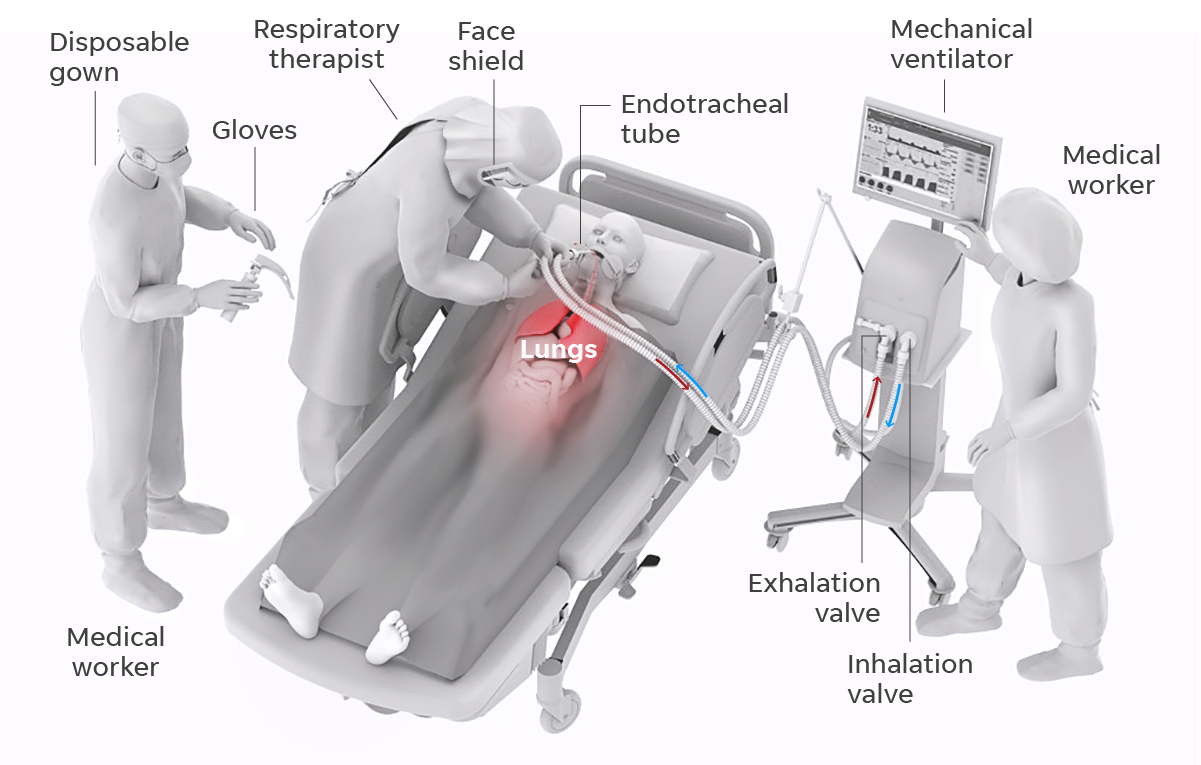A concern has started to bother doctors across the globe on treating coronavirus impacted patents. The question which is disturbing the doctors is — when should patients who need help breathing be placed on ventilators — and could intubation do some people more harm than good?

It’s one of the biggest medical problems, globally, besides gauging the impact of hydroxychloroquine (HCQ) drug for treating Covid-19 patients, a US doctor told AFP. The data is insufficient and there isn’t any confirmed research on the subject since the virus itself is so new and we don’t have the advantage of hindsight.
It’s also difficult to understand for sure whether the patients placed on ventilators would have died anyway because of their deteriorating condition. However, a large number of doctors have stated that coronavirus impacted patients appear to fade quickly when they are put on ventilators and tubes are placed down their windpipes.
Moscow’s Priorities During COVID-19: International Prestige Over The Safety Of Its Citizens: OpEd
In recent weeks, US hospitals have started delaying the use of ventilators. The first warning signs came from Italy, where the vast majority of patients placed on artificial breathing collapsed.
The statistics are also bad in the UK and in the city of New York, where 80% of intubated patients died, according to the state’s governor, often after spending a week or two in intensive care in which they are placed in an artificial coma and their muscles atrophy.
At the beginning of the coronavirus outbreak, patients who were completely out of breath were administered for severe lung condition — Acute Respiratory Distress Syndrome (ARDS). This condition, which limits the lungs from getting in enough oxygen to pass on to other organs, can be triggered by infection or by physical injury.
It’s very threatening, with studies placing the overall fatality rate at around 40%. The standard procedure for these patients is to intubate relatively early, and this is how coronavirus infected patients have generally been treated.
Until, that is, medics began to understand lung complications among patients weren’t quite the same as “typical” ARDS patients, at least not in all cases. The lungs aren’t degraded in the same way — they are less “stiff.”
Not Chinese Army But Beijing’s Investment Policy Biggest Threat To India
Doctor Luciano Gattinoni and his colleagues in Milan described at the end of February how they had to adjust their procedures. “All we can do (by) ventilating these patients is ‘buying time’ with minimum additional damage,” he wrote in a research letter to the journal of the American Thoracic Society where he argued for lower air pressure settings.
Kevin Wilson, guideline director for the American Thoracic Society guideline, affirmed the need for caution. “Most of the health care community has gone a little nervous by these bad reports about people not doing well on the ventilator, and actually is moving towards trying to delay intubation,” he told AFP. “We delay as long as we can, but not to a point where it becomes emergent,” he added.
Despite Quality Issues, China Could Supply Medical Equipment Worth Billions To India
Medics acknowledged that some Covid-19 impacted patients having very low blood oxygen levels and would normally be intubated could infact go without it. Instead of directly using ventilators, doctors are opting to use less invasive methods — like nasal cannulas that feed oxygen up the nose, conventional or more sophisticated breathing masks, or even placing the patients on their stomachs, which helps the lungs. “We’re learning as we go,” said Wilson.
Medical societies, including international experts from the Surviving Sepsis Campaign, are in the process of writing best practice guidelines. None yet have a definitive answer.
Via: AFP




